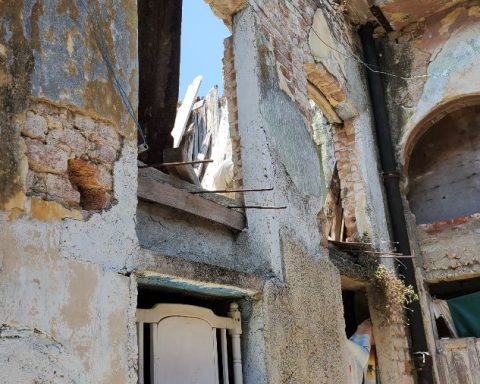Havana Cuba. — Customary prints show milkmen, those men who sold milk and went through the streets with their cows and stopped to milk them in front of a client’s house or in a warehouse. It was Spaniards, especially from the Canary Islands, who at the end of the 19th century started the business of selling milk with wagons pulled by mules and horses.
With the passage of time, large companies that offered pasteurized and homogenized milk emerged on the island. The first and most important of these industries was the “Cuban Dairy Company SA” —founded in 1929 — and whose building still exists at the intersection of Cristina and Concha streets, on the border between Old Havana and Diez de Octubre. Hatuey ice cream and La Lechera condensed milk were also made there. In 1947, the business passed into the hands of Compañía de Productos Lácteos SA”
For home delivery of milk, they used closed trucks where they brought the bottles in boxes and kept them cold with ice stones.
The husband of a maternal aunt, Armando Medina, worked for the Aljibe industry and owned two trucks with which he distributed milk in cafeterias, warehouses and small businesses. The milk was sought daily in a plant located in Madruga, tens of kilometers southeast of Havana.
A milkman named Guzmán would come to my house, who would climb the stairs and walk down a long corridor until he reached our apartment. There he delivered the glass bottle with its paraffin cap, the inner cardboard stopper and the little wire that surrounded the mouth to seal everything as a guarantee. Because it was something special, it cost 30 cents a liter. A month it was nine pesos, the same as a scoop of ice cream costs now in Coppelia.
In many houses, in order not to have to get up to open the door for the milkman, they would leave the empty liter at the door and the peseta that it cost, and they would pick up the full liter when they woke up. And although it is hard for the youngest to believe, nobody stole it.
The quality of the milk was classified into A and B, according to the degree of purity. Prices ranged from 15 to 25 cents, depending on the prestige of the company and the distribution area.
milk there was no lackIt was not a luxury at all. Many people, especially public employees, had breakfast in existing cafeterias anywhere. There a skilful clerk, with a jug in each hand, mixed the coffee with the milk in a cup; to this was added the classic bread with butter. The cost depended on the category of the establishment, but was rarely more than ten cents.
In the cafeterias you could also find smoothies of mamey, bomba fruit, mango, guava or other fruits, all made with milk, which constituted a pleasant snack. You could also taste ice cream, very typical for our climate.
In winter, it was customary to have Spanish-style chocolate in cafeterias or at home.
In the evenings, instead of a meal, or before going to bed, many families drank milk, either hot or cold, mixed with coffee or chocolate.
During the republican stage, Cuba came to have one head of cattle per inhabitant. After the Agrarian Reform, many of the lands used for grazing cattle, especially in the province of Camagüey, were used for crops, mainly sugarcane, and the decline of cattle ranching began.
Having breakfast with cow’s milk today in Cuba is a luxury. For more than 30 years milk vanished almost entirely from the diet of the average Cuban. The scarce cow’s milk that the State sells for the Supply Book It is only for children under the age of seven. Sick people on medical diets are given imported powdered milk, which is very expensive in the world.
You can’t even find milk in stores at MLC anymore. In some of the new Mypimes, apparently private businesses, but which, in many cases, are in the hands of former soldiers and retired officials, they sell a 1-kilogram bag of milk for 1,900 pesos, thus squeezing more out of the people’s pockets.
Finding someone selling fresh milk in urban areas is almost a miracle. The price of a liter (which does not give more than six glasses) ranges between 120 pesos and 150 pesos.
In rural areas or on the outskirts of cities, a farmer occasionally appears who owns cows and sells, always to the left, part of his product. Cowboys in the field are required to deliver all milking to the state for the dairy industry. Some hide a part to make homemade yogurt and cheese to sell: a liter of yogurt for 250 pesos and a pound of cheese for 500.
Many mothers frequently express that they do not send their children to school because they do not have anything to give them for breakfast. In most homes, even where there are elderly people, breakfast is just bread and coffee, if there is any.
OPINION ARTICLE
The opinions expressed in this article are the sole responsibility of the person who issues them and do not necessarily represent the opinion of CubaNet.
















